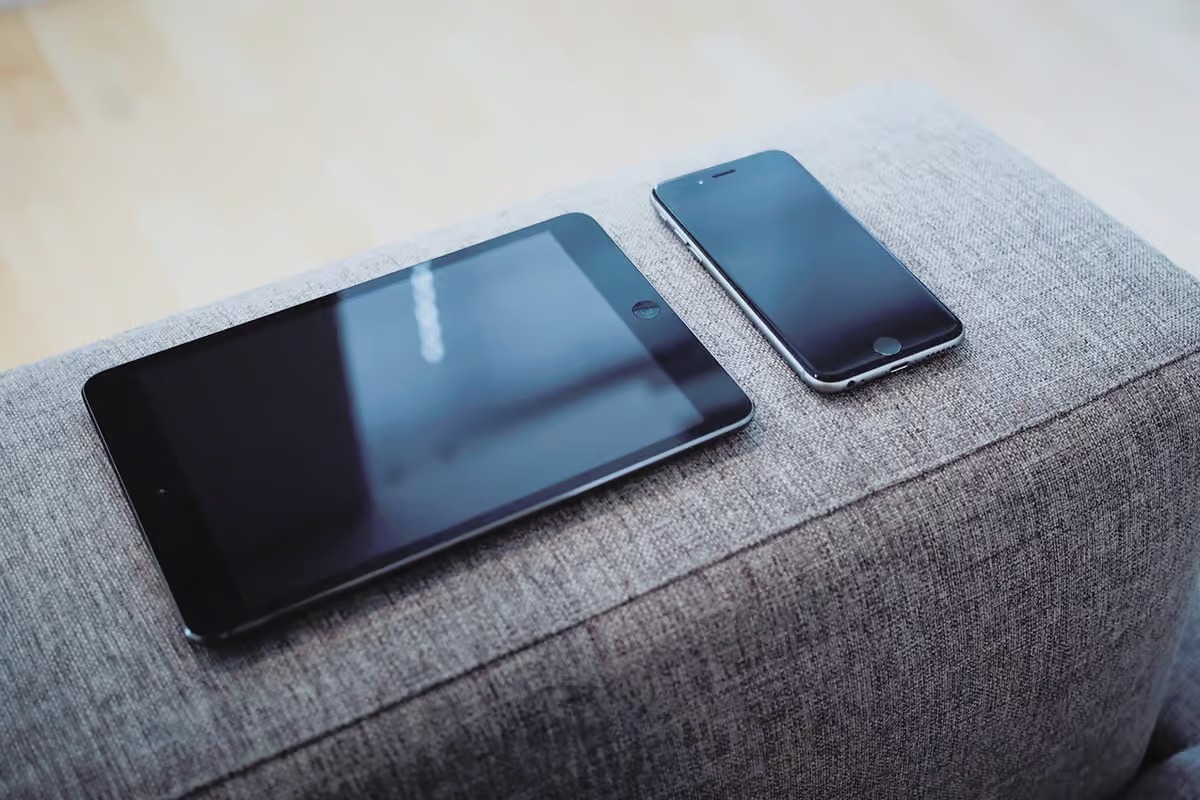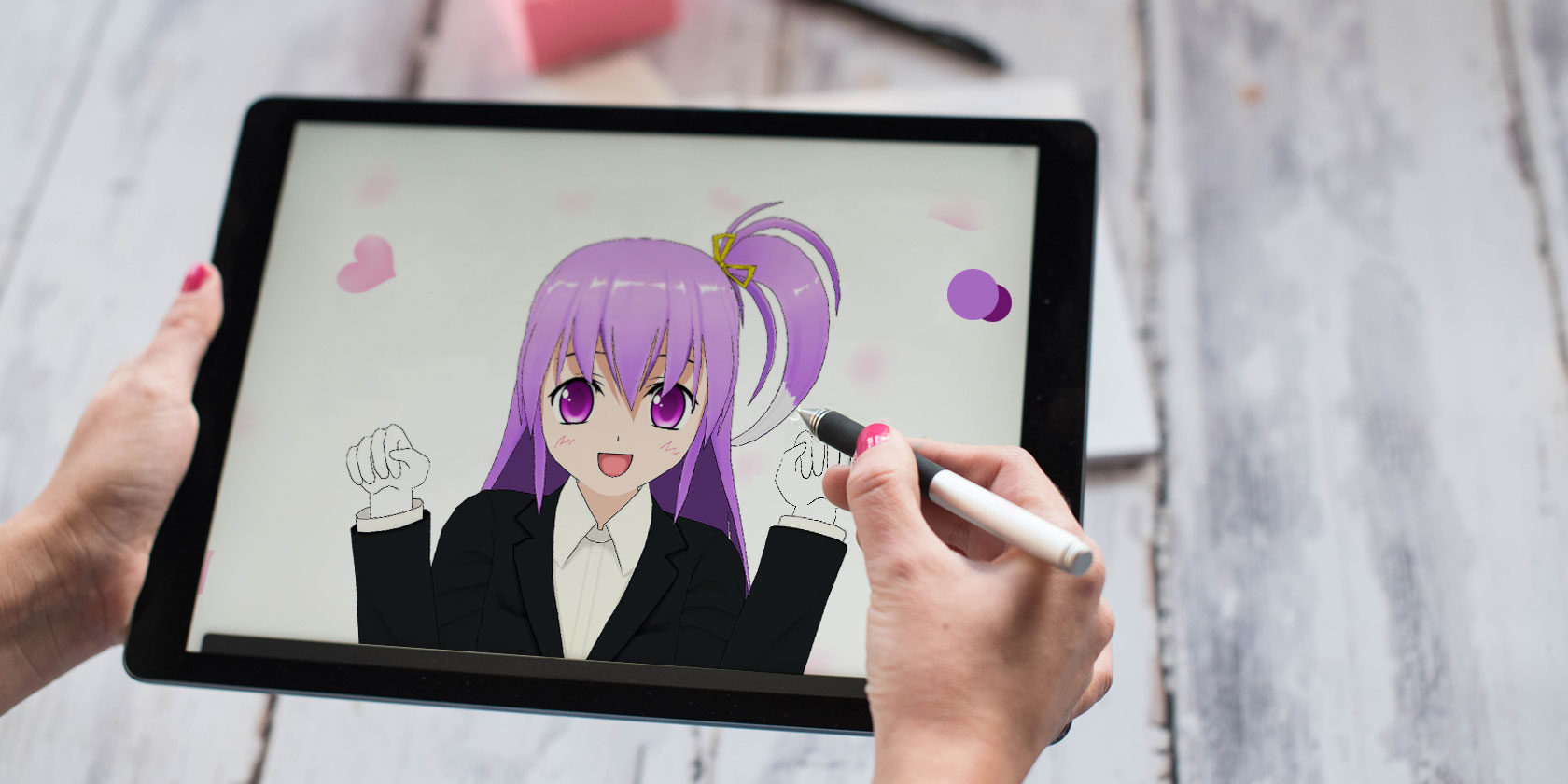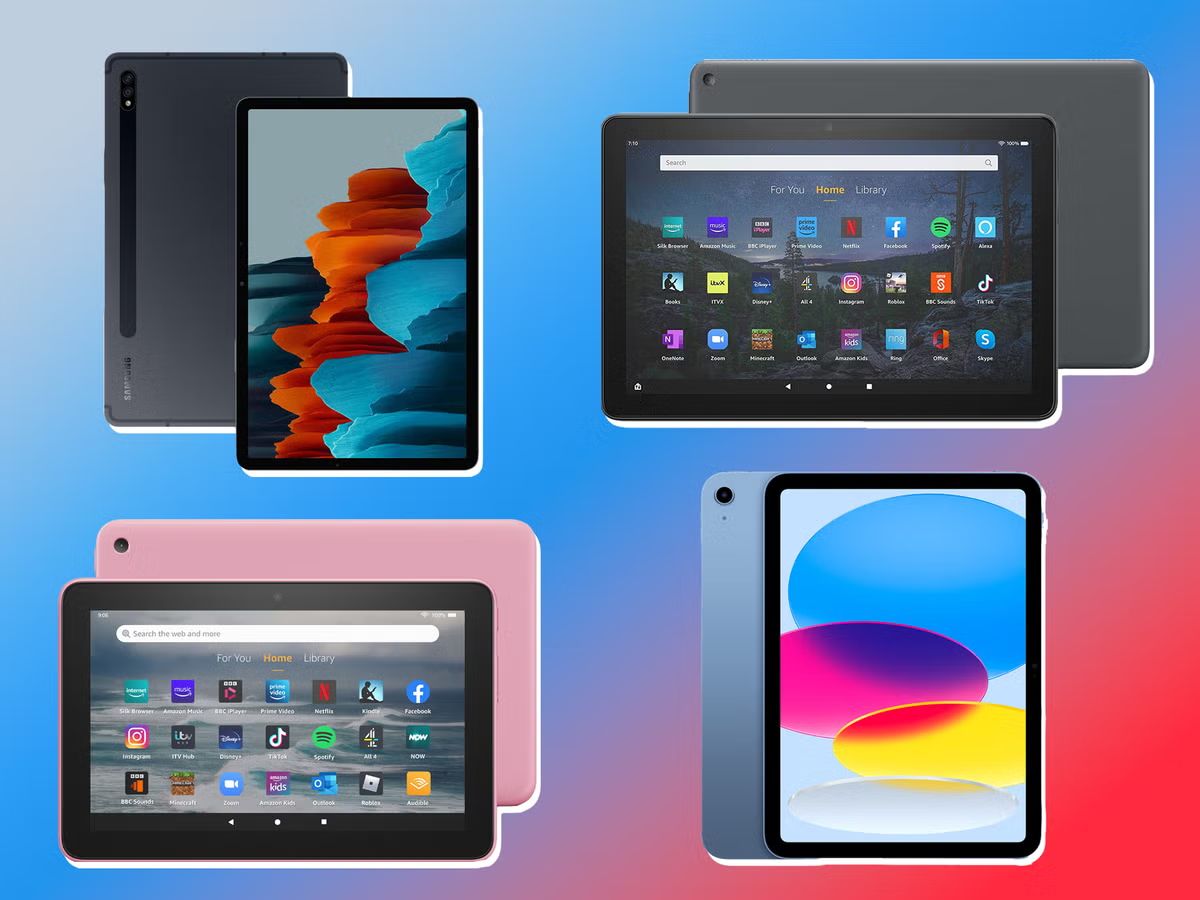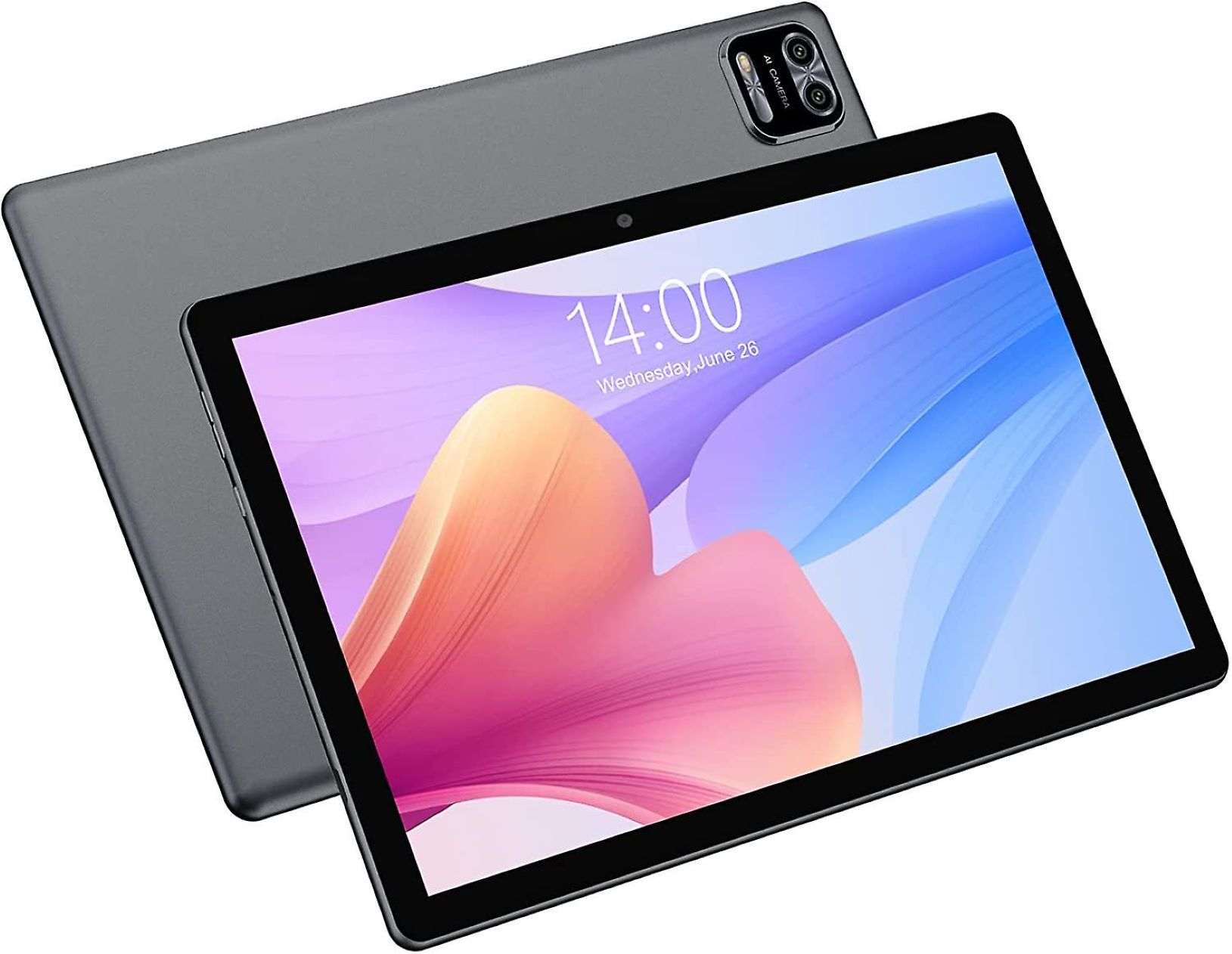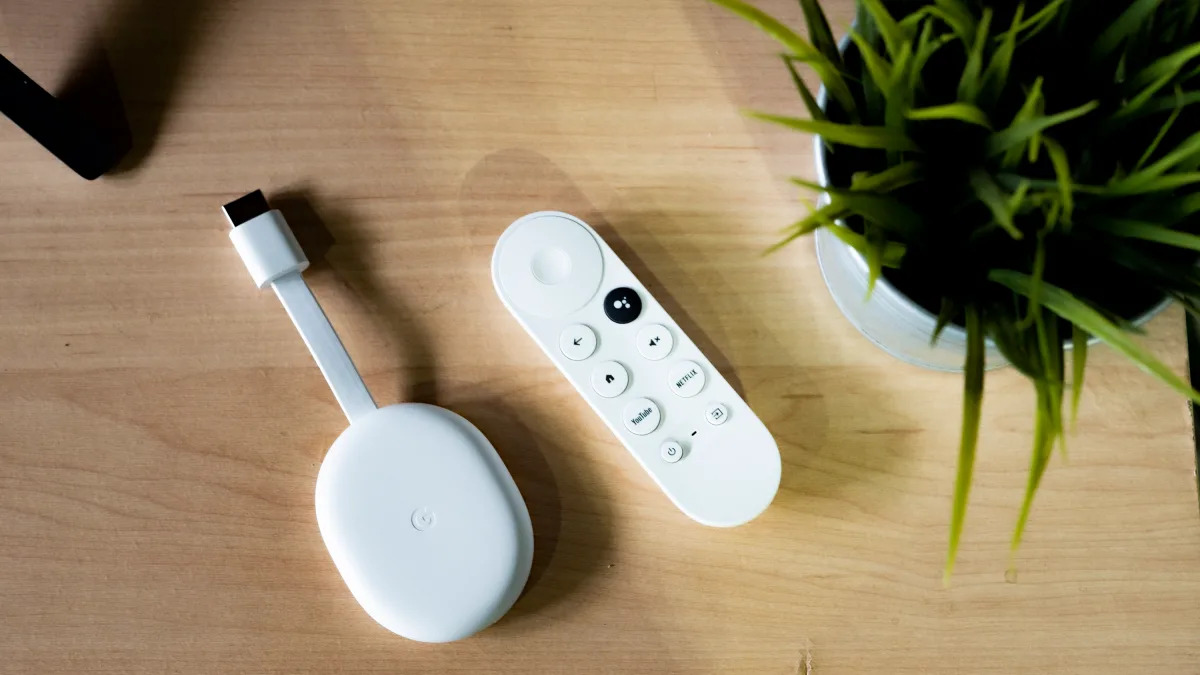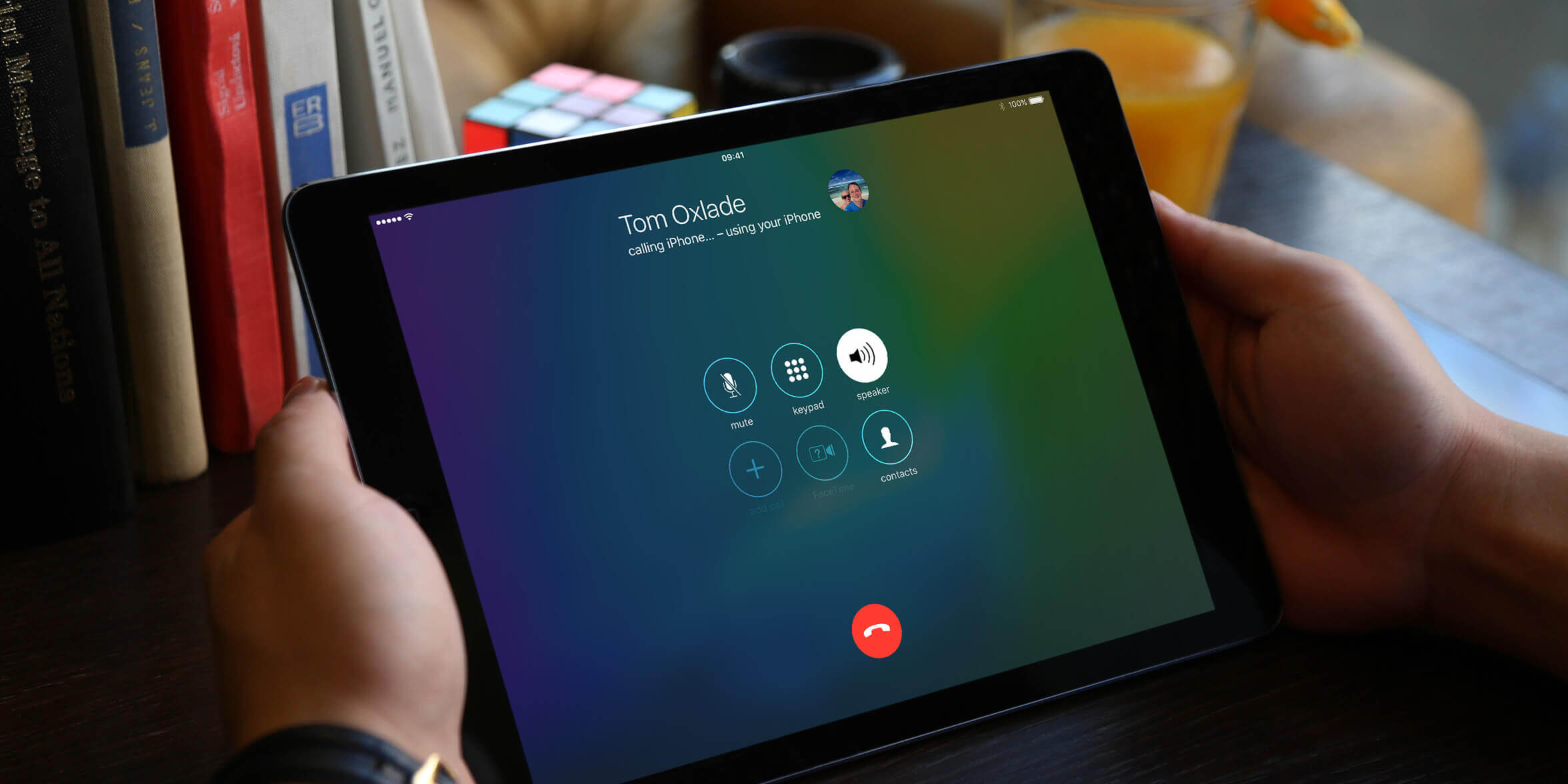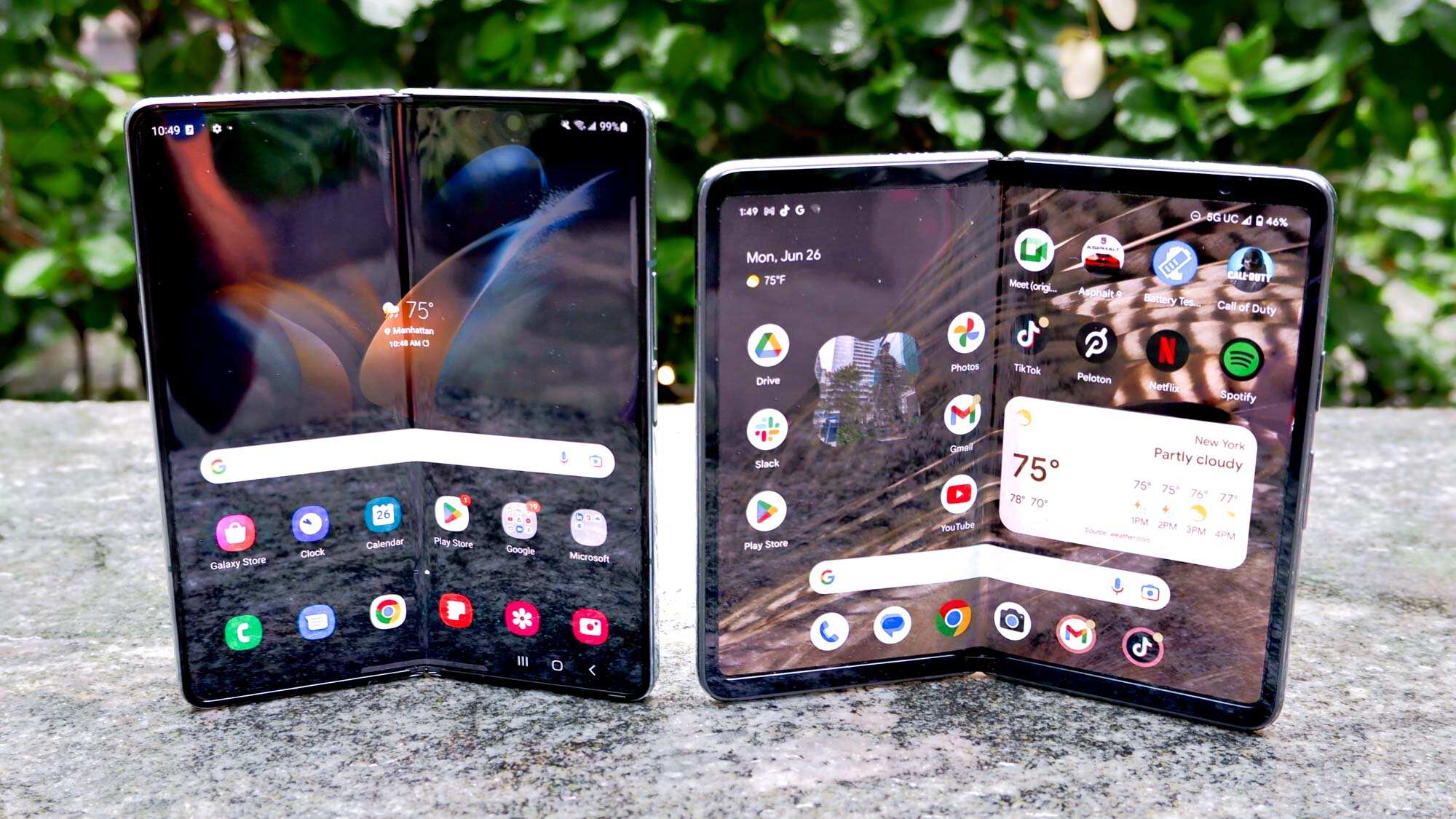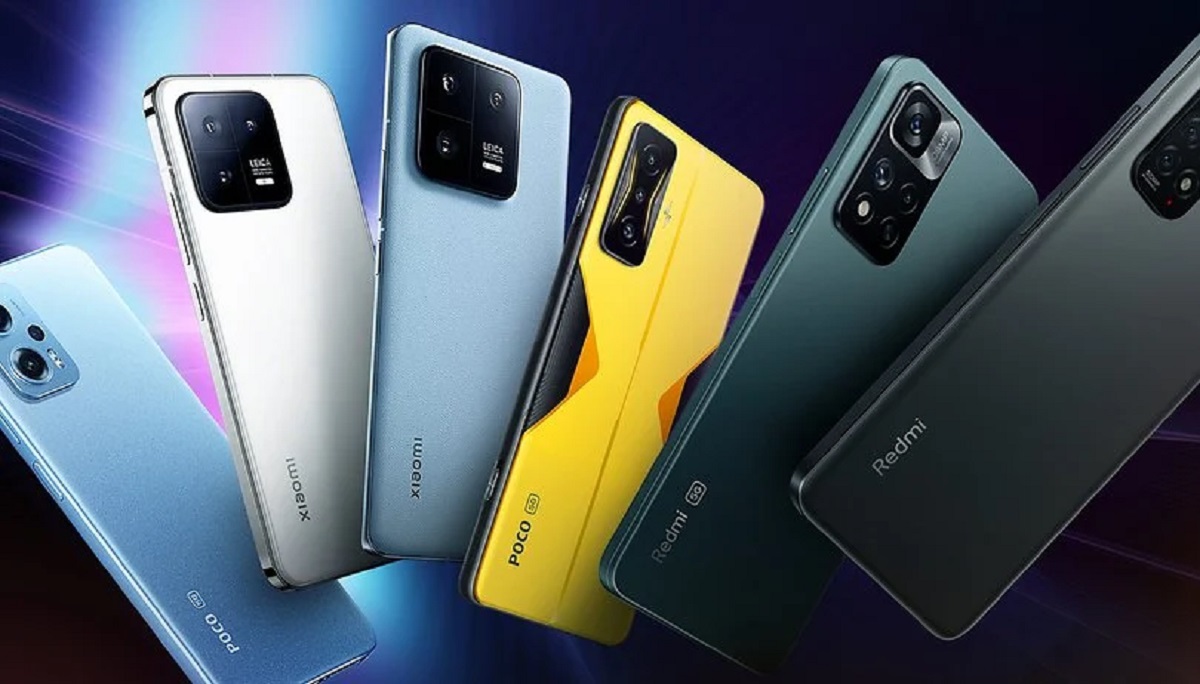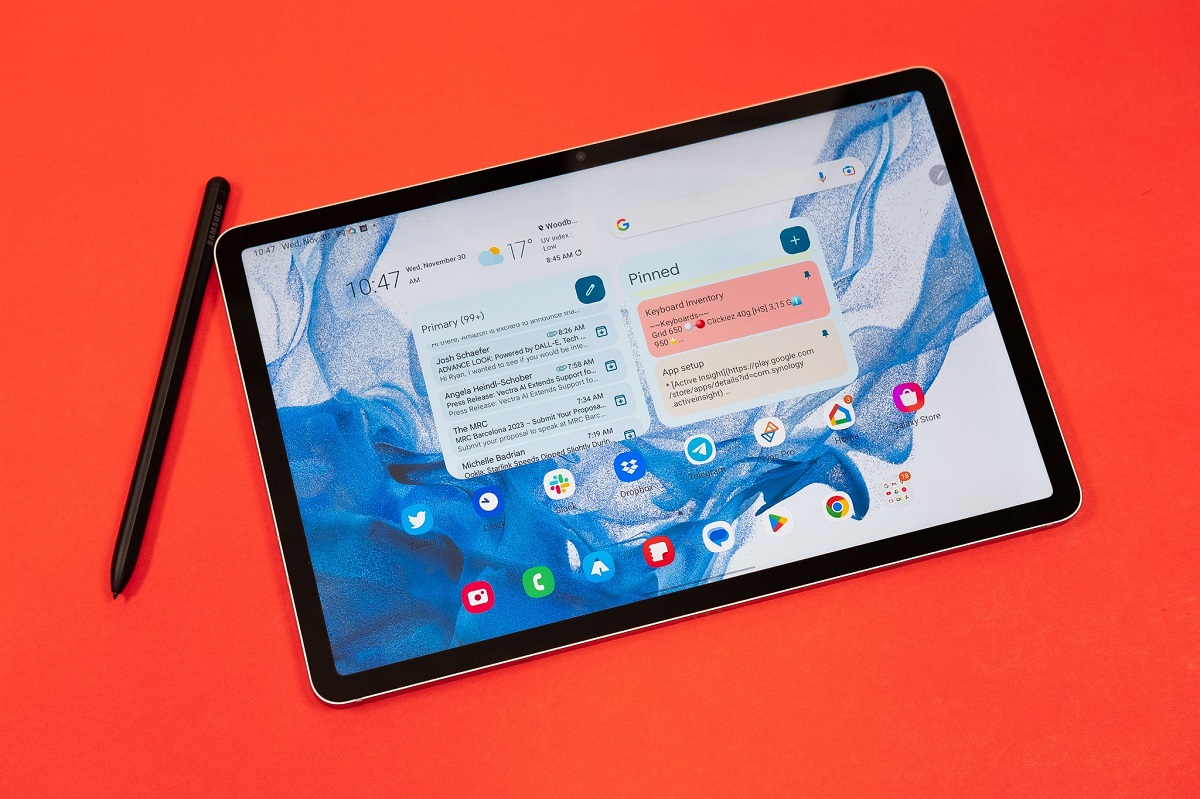Introduction
When it comes to choosing between a phone and a tablet, it’s not always an easy decision. Both devices offer their own unique advantages and functionalities. Whether you’re a student, a professional, or simply a tech-savvy individual, understanding the differences between these devices can help you make an informed choice.
Phones and tablets have become an integral part of our lives, revolutionizing the way we communicate, work, and entertain ourselves. However, they differ significantly in terms of size, portability, display, performance, battery life, camera capabilities, storage capacity, and price. This article will delve into each of these aspects to explore the pros and cons of phones and tablets, helping you decide which device best suits your needs.
Size and portability play a crucial role in determining the convenience of a device. Phones are typically smaller and more pocket-friendly, making them ideal for on-the-go use. Tablets, on the other hand, offer a larger screen size, providing a better visual experience for tasks such as reading e-books, watching videos, or conducting presentations. Consider your lifestyle and usage patterns to determine whether portability or a larger display is more important to you.
Display and visual experience are key factors to consider. While both phones and tablets offer vibrant displays, tablets often provide a more immersive experience due to their larger screens. Tablets are perfect for multimedia consumption, gaming, and browsing the web. On the other hand, phones excel in one-handed use, making them the go-to choice for quick tasks, social media browsing, and communication.
Performance and processing power are crucial for tasks that require extensive computing capabilities. Tablets tend to have more powerful processors and larger RAM capacities, making them suitable for demanding applications, multitasking, and productivity tasks. Phones, while not as powerful as tablets, still offer impressive processing power for day-to-day tasks and casual gaming.
Battery life is another significant consideration. Generally, tablets have larger batteries compared to phones, which can result in longer usage times. If you plan on using your device extensively for media consumption or work, a tablet may be the better choice to ensure you don’t end up frequently searching for a charger.
Camera and photography capabilities can greatly influence your decision. Phones often boast superior camera systems, including multiple lenses, image stabilization, and advanced photography features. Tablets, while they may have decent cameras, are not typically designed with photography as the primary focus. Consider your photography needs and whether a high-quality camera is a priority for you.
Storage capacity is important for storing apps, files, and media. Generally, tablets offer more built-in storage compared to phones. Additionally, many tablets have expandable storage options, allowing you to insert a microSD card for even more space. Phones, on the other hand, tend to offer limited internal storage but often include cloud storage options to compensate for this limitation.
Usage and functionality should align with your specific needs. If you primarily need a device for communication, browsing, and basic tasks, a phone would suffice. However, if you require a device for work, content creation, or immersive media consumption, a tablet may be better suited to meet your requirements.
Price and affordability are factors that play a significant role in the decision-making process. Generally, phones are more affordable compared to tablets. However, there is a wide range of pricing options available for both devices, with high-end flagship models being more expensive. Evaluate your budget and determine the features that are essential for you to make an informed decision.
As you can see, the decision between a phone and a tablet ultimately comes down to your individual preferences, lifestyle, and specific needs. Consider the factors discussed in this article before making your choice. Remember, there is no one-size-fits-all answer; the “best” device is the one that meets your unique requirements and enhances your digital experience.
Size and Portability
When it comes to choosing between a phone and a tablet, one of the key factors to consider is size and portability. Phones are typically compact and pocket-friendly, making them highly portable and convenient for on-the-go use. On the other hand, tablets offer a larger screen size, providing a more immersive visual experience for tasks such as reading e-books, watching videos, or conducting presentations.
The compact size of phones makes them ideal for those who prioritize portability. You can easily slip your phone into your pocket or bag and carry it with you wherever you go. This convenience makes phones perfect for quick and convenient communication, browsing social media, or checking emails on the move. They are also suitable for one-handed use, allowing you to perform tasks easily while holding the device in one hand.
While phones excel in portability, tablets offer a larger display, enhancing the visual experience. Tablets typically have screen sizes ranging from 7 to 12 inches, providing a generous canvas for multimedia consumption and productivity tasks. The larger screen size makes tablets perfect for activities that require more screen real estate, such as reading textbooks, watching movies, editing documents, or creating digital artwork.
When deciding between a phone and a tablet, consider your lifestyle and usage patterns. If you are constantly on the go and need a device that can fit in your pocket or small bag, a phone would be the more suitable option. It allows you to stay connected and perform basic tasks easily while on the move.
However, if you prioritize a larger screen size for activities such as watching videos, playing games, or working on documents, a tablet would be a better choice. Tablets provide a more immersive visual experience, making them ideal for media consumption, gaming, and browsing the web in a more comfortable and enjoyable manner.
It’s worth noting that advancements in technology have led to the emergence of phablets, which are devices that bridge the gap between phones and tablets. Phablets offer larger screen sizes compared to traditional smartphones, while still maintaining a compact form factor. These devices aim to provide a balance between portability and a more expansive visual experience.
Ultimately, the choice between a phone and a tablet in terms of size and portability depends on your individual preferences and the specific tasks you need the device for. Assess your lifestyle, the scenarios in which you will use the device, and your comfort level with different form factors to make an informed decision.
Display and Visual Experience
When comparing phones and tablets, one of the crucial factors to consider is the display and visual experience they offer. Both devices have their own strengths and limitations in terms of screen size, display quality, and overall visual immersion.
Phones generally have smaller screens, typically ranging from 4 to 6.5 inches, designed for one-handed operation and maximum portability. The compact display size of phones makes them ideal for everyday tasks such as texting, making calls, checking emails, and browsing social media. The smaller screen size also means that phones are more pocket-friendly and easier to handle on the go.
On the other hand, tablets boast larger screen sizes, typically ranging from 7 to 12 inches. This larger canvas provides a more immersive experience when it comes to consuming media, playing games, or working on tasks that require a larger display area. Watching movies, reading e-books, viewing photos, and engaging in creative activities such as drawing or editing photos are all enhanced by the generous screen real estate of a tablet.
In terms of display quality, both phones and tablets offer vibrant and sharp visuals. However, due to the larger screen size, tablets often provide better image clarity and detail. Tablets also offer higher resolutions, ensuring that you can enjoy high-definition content with greater clarity and precision. This is especially advantageous for activities such as watching movies, playing graphic-intensive games, or viewing photos in intricate detail.
Additionally, tablets often feature better color reproduction and wider color gamuts, resulting in more accurate and lifelike visuals. This makes them well-suited for tasks that require precise color representation, such as graphic design or photo editing. Tablets also provide a more comfortable viewing experience for extended periods, as the larger screen helps reduce eye strain.
While phones may not offer as impressive a visual experience as tablets due to their smaller display sizes, they have their own advantages. The compact screens of phones make them more portable and convenient for quick tasks and one-handed use. This is particularly useful for activities such as texting, making calls, or checking notifications in a hassle-free manner.
Ultimately, the decision between a phone and a tablet in terms of display and visual experience depends on your preferences and usage patterns. If you prioritize immersive media consumption, gaming, or engaging in tasks that require a larger display area, a tablet would be the logical choice. On the other hand, if portability and one-handed usability are important to you, a phone may better suit your needs.
It’s also worth mentioning that advancements in smartphone technology have led to the emergence of edge-to-edge displays, high refresh rates, and HDR support on some phones. These features enhance the visual experience on phones, making them more appealing to users who want better display quality without sacrificing portability.
Consider your media consumption habits, the types of tasks you will primarily use the device for, and your personal preferences when making a decision about the display and visual experience that best aligns with your needs.
Performance and Processing Power
When comparing phones and tablets, the performance and processing power of the devices are important factors to consider. While both phones and tablets are equipped with processors and RAM to handle various tasks, there are differences in terms of processing power and multitasking capabilities.
Tablets typically have more powerful processors and larger RAM capacities compared to phones. This allows them to handle more demanding tasks, such as editing videos, running complex applications, or multitasking between multiple apps seamlessly. The increased processing power and RAM make tablets better suited for productivity tasks, gaming, and other resource-intensive activities.
Phones, although not as powerful as tablets, still offer impressive performance for day-to-day tasks, such as browsing the internet, checking emails, using social media apps, or making calls. They are capable of handling most common applications and casual gaming with ease. However, when it comes to more demanding tasks, such as video editing or running high-end games, the limitations of phones’ processing power and RAM become more apparent.
In terms of processing power, tablets often house quad-core or octa-core processors, which provide faster and more efficient performance compared to phones. These processors, coupled with higher clock speeds and advanced architectures, enable tablets to deliver swift and smooth performance across a range of tasks.
Furthermore, the larger size and robust hardware of tablets allow for better heat dissipation, meaning they can sustain performance for longer periods without throttling. This makes tablets well-suited for extended periods of usage, such as working on graphics-intensive projects or engaging in prolonged gaming sessions.
When determining whether you need the superior processing power of a tablet or if a phone will meet your needs, consider the type of tasks you will be performing on the device. If you require advanced multitasking capabilities, will be running resource-intensive applications, or need smooth and seamless performance for tasks such as video editing or gaming, a tablet would be a more appropriate choice.
On the other hand, if you primarily use your device for day-to-day tasks such as checking emails, browsing the internet, or using social media, a phone’s processing power will likely be sufficient. Phones offer a good balance of performance and portability for everyday use.
It’s worth noting that both phones and tablets are constantly evolving, with manufacturers pushing the boundaries of processing power with each new release. Newer flagship phones often feature high-end processors and ample RAM, rivaling the performance of some tablets. Therefore, it’s important to keep an eye on the specifications and performance benchmarks of the latest devices before making a decision.
Ultimately, the choice between a phone and a tablet in terms of performance and processing power depends on the intensity of your tasks and your specific requirements. Consider your usage patterns, the types of applications you will be running, and your need for multitasking capabilities to make an informed decision.
Battery Life
When comparing phones and tablets, one of the critical factors to consider is battery life. The amount of time a device can run on a single charge determines its usability and convenience in different scenarios. Both phones and tablets aim to provide sufficient battery life to keep you connected and productive throughout the day, but there are differences between the two.
Generally, tablets tend to have larger batteries compared to phones due to their larger size and the need to power a larger display. This larger battery capacity translates into longer usage times for tablets. Tablets can typically provide several hours of continuous usage, making them suitable for extended periods of work, media consumption, and entertainment without requiring frequent charging.
On the other hand, phones are designed to be more compact, lightweight, and portable, and therefore have smaller batteries. While phones may not have the same battery capacity as tablets, they are more optimized for efficiency and power management. Smartphone manufacturers have developed various battery-saving features and software optimizations to maximize the battery life of phones.
In terms of daily usage, phones are generally more power-efficient due to their smaller screens and technology advancements. This allows them to conserve energy and deliver longer standby times. However, when it comes to intense usage, such as playing graphics-intensive games or streaming videos for extended periods, phones may drain their batteries relatively quickly.
Tablets, with their larger batteries, can sustain extended periods of multimedia consumption, productivity tasks, and gaming. They are better equipped to handle resource-demanding activities without draining the battery too quickly. This is particularly advantageous for users who need a device that can keep up with their work or entertainment needs without frequent interruptions for charging.
It’s important to note that battery life can vary significantly between different models and brands of both phones and tablets. Factors such as display brightness, software optimization, network connectivity, apps running in the background, and usage patterns can all influence battery consumption. Checking the battery specifications and user reviews of specific models can give you a better idea of their real-world battery performance.
If you prioritize long-lasting battery life and need a device that can handle prolonged usage without the need for frequent charging, a tablet may be the better choice for you. Tablets offer a larger battery capacity and are well-suited for power-heavy tasks.
However, if portability and convenience are your primary concerns and you primarily use your device for everyday tasks such as making calls, checking emails, or browsing social media, a phone with its efficient power management and optimized battery life may be sufficient for your needs.
Ultimately, the choice between a phone and a tablet in terms of battery life comes down to your individual usage patterns, the specific tasks you need the device for, and the importance of having a device that can sustain extended usage without frequent charging.
Camera and Photography
When it comes to capturing precious moments or expressing your creativity through photography, the camera capabilities of a device play a crucial role. Both phones and tablets have integrated cameras, but there are differences in terms of image quality, features, and overall photography experience.
Phones are well-known for their advanced camera systems, often featuring multiple lenses, high-resolution sensors, and powerful image processing capabilities. Due to their compact size, phones are designed to be easily accessible, allowing you to capture a photo or record a video with just a few taps. Phone cameras are optimized for quick and convenient photography, making them ideal for capturing everyday moments, selfies, and documenting events on the go.
In recent years, phone manufacturers have focused heavily on improving camera quality and introducing innovative features. These advancements include optical image stabilization, Night Mode, AI-based scene recognition, and advanced HDR (High Dynamic Range) imaging. These features enhance the overall image quality, allowing you to capture vibrant, sharp, and well-exposed photos in various lighting conditions.
Tablets, while they often have cameras, do not typically prioritize photography as the primary focus. The camera capabilities of tablets are usually on par with mid-range smartphones, but they may lack the advanced features and image processing capabilities found in high-end flagship phones. Tablets are not as convenient for spontaneous photography due to their larger size and are more suited for stationary or planned photography activities.
However, tablets can still serve as a useful tool for certain photography needs. Their larger screens provide a better viewfinder for composition and reviewing photos. Tablets can be particularly useful for editing photos, thanks to the larger display and more precise touch controls. If you enjoy editing, retouching, or enhancing your photos, a tablet offers a better visual and tactile experience.
When deciding between a phone and a tablet in terms of camera and photography, consider your photography needs and how you plan to use the device. If you prioritize high-quality photos, video recording capabilities, and advanced camera features, a phone would be the more suitable choice. Phones offer a compact, always-available camera that allows you to capture moments on the go.
However, if you prefer a larger screen for reviewing and editing photos, and photography is not your primary use case, a tablet can still fulfill your basic photography needs. Tablets can provide a more immersive and comfortable editing experience when it comes to tweaking your shots and sharing them on social media or with friends and family.
It’s worth noting that both phone and tablet cameras have improved significantly over the years, and the camera capabilities may vary between different models and brands. If photography is a top priority, it’s beneficial to research the camera specifications, read reviews, and compare sample photos taken with the devices you are considering.
Ultimately, the choice between a phone and a tablet in terms of camera and photography depends on how frequently you use the camera, the level of image quality you desire, and your preference for a compact or larger device for capturing and editing photos.
Storage Capacity
When considering which device to choose between a phone and a tablet, the available storage capacity is an important factor to consider. Storage capacity determines how much data, such as apps, files, photos, and videos, you can store on your device without the need for external storage or frequent deletions.
Generally, tablets offer more storage capacity compared to phones. Tablets typically start with a minimum of 32GB of storage and can go up to 256GB or even higher in some cases. Some models even offer the option to expand storage further with the use of microSD cards. This ample storage capacity is advantageous for those who have large media collections or require significant storage space for work-related files.
Phones, on the other hand, usually offer a range of storage options starting from 16GB up to 512GB or more for flagship models. It is important to note that the actual usable storage is less than what is advertised due to the operating system and pre-installed apps taking up a portion of the storage space. Some phones also offer expandable storage through microSD cards, though this feature is becoming less common in recent flagship models.
When deciding between a phone and a tablet in terms of storage capacity, consider your specific needs and usage patterns. If you tend to store a large amount of media such as photos, videos, or music, a tablet’s larger storage capacity may be more desirable. Tablets can accommodate a wide variety of media files without the need for external storage, allowing you to carry your entertainment library or work documents without worry.
Phones, while they may have more limited built-in storage capacity, can still be suitable for many users who primarily use their devices for communication, browsing the internet, and using essential apps. Cloud storage services such as Google Drive or iCloud, as well as streaming services like Spotify and Netflix, can further alleviate storage limitations on phones.
Consider your storage needs and assess the applications and media files you regularly use. If you require extensive storage for large media files, work documents, or offline access to your library, a tablet’s larger storage capacity can provide a more seamless experience without the need for external storage or regular file management.
However, if you primarily use your device for everyday tasks and rely on cloud-based services for storage and streaming media, a phone’s storage capacity may be sufficient. Phones are often more compact and portable, which can be advantageous for those who prioritize mobility and convenience.
It’s also important to remember that storage needs can grow over time as you accumulate more data and media files. Depending on your usage, you may need to regularly assess and manage your storage to ensure you have enough space for new content.
Ultimately, the choice between a phone and a tablet in terms of storage capacity depends on your specific requirements, the amount and type of data you need to store, and your preference for a larger or more compact device with regard to your storage needs.
Usage and Functionality
When deciding between a phone and a tablet, the usage and functionality of the device are crucial aspects to consider. Understanding how you plan to use the device and the specific tasks you need it for will help you make an informed choice.
Phones are highly versatile and serve as a convenient all-in-one device for communication, browsing the internet, and using apps. They excel in tasks that require mobility and one-handed use, making them ideal for staying connected on the go. Phones are perfect for quick tasks such as checking emails, making calls, sending texts, and accessing social media on the move.
In addition to communication, phones offer a wide range of functionality through various apps. They can be used for productivity tasks such as creating documents, managing calendars, and organizing tasks. Phones also provide access to a wealth of entertainment options, including streaming music and videos, playing games, and accessing social media platforms.
Tablets, on the other hand, offer a more immersive experience due to their larger screen size. They are well-suited for tasks that require a larger display area, such as reading e-books, browsing the internet, watching videos, and engaging in creative activities like drawing or graphic design. Tablets provide a more comfortable and enjoyable visual experience for media consumption, gaming, and multitasking.
Tablets offer enhanced productivity capabilities compared to phones, thanks to their larger screen real estate. They are ideal for tasks that require extensive typing, such as writing emails, working on documents, or creating presentations. Tablets are also favored by professionals in fields like graphic design or architecture, as they provide a larger canvas for detailed work and better precision when using stylus pens.
Consider your specific needs and the tasks you prioritize. If you require a device primarily for communication, quick tasks, and on-the-go usage, a phone would likely be the better choice. Phones provide excellent mobility and versatility, allowing you to stay connected and perform day-to-day tasks easily while maintaining a compact form factor.
However, if you need a device that offers a more immersive and expansive visual experience, larger screen real estate, and enhanced productivity capabilities, a tablet may be a better fit. Tablets are suitable for individuals who require a more substantial device for media consumption, gaming, content creation, or multitasking.
It’s important to assess your specific workflow and usage patterns to determine which device will best meet your needs. The decision ultimately depends on the tasks you will be performing, your preference for mobility or a larger display area, and your comfort level with different form factors.
It’s worth noting that advancements in technology have resulted in the emergence of hybrid devices that combine the functionality of both phones and tablets. For example, there are phablets, which offer a larger display than traditional phones but are smaller than tablets, offering a compromise between portability and an expansive visual experience. These hybrid devices aim to provide a balance between the advantages of both phones and tablets.
Ultimately, choose the device that aligns with how you plan to use it, ensuring that it enhances your productivity, fits seamlessly into your workflow, and enriches your overall digital experience.
Price and Affordability
Price and affordability are essential factors to consider when deciding between a phone and a tablet. The cost of these devices can vary significantly depending on the brand, model, specifications, and storage capacity.
Generally, phones tend to be more affordable compared to tablets. There is a wide range of options available, from budget-friendly smartphones to high-end flagship models. Budget-friendly phones offer basic functionality and decent performance at a lower price point, making them accessible to a broader range of users.
On the other hand, tablets often have a higher price range due to their larger form factor, advanced features, and increased storage capacity. Tablets are typically positioned as premium devices, offering a more immersive visual experience, enhanced productivity, and higher-end specifications. High-end tablets can be comparable to or even exceed the price of some flagship smartphones.
It’s essential to consider your budget and the features that are essential to you when making a decision. If cost is a significant factor and you prioritize affordability, a phone may be the better option. There are numerous budget-friendly smartphones available that offer good performance, everyday functionality, and great value for the price.
However, if you require a larger screen, more powerful specifications, and advanced features that are usually found in tablets, then investing in a tablet may be justifiable. This is especially true if you are an artist, designer, or professional who requires the extra screen real estate and advanced stylus capabilities for work-related tasks.
It’s worth noting that both phones and tablets come in various price ranges, and expensive devices are not always necessary to fulfill your needs. Evaluate your usage patterns, the specific features you require, and how much you are willing to spend to find the sweet spot between functionality and affordability.
Consider the long-term value of the device as well. While a phone may be more affordable initially, tablets are often built to last longer due to their larger size and more advanced features. Investing in a tablet may provide greater longevity and ensure that the device remains relevant for a more extended period.
Additionally, keep an eye out for deals, promotions, and discounts offered by retailers and manufacturers. Prices of both phones and tablets can fluctuate over time, and you may be able to find a device that matches your requirements at a more affordable price point.
Ultimately, the choice between a phone and a tablet in terms of price and affordability comes down to your budget, the specific features you require, and the long-term value you expect from the device. Assess your financial considerations, desired features, and prioritize your spending accordingly to make an informed decision.
Conclusion
Choosing between a phone and a tablet ultimately boils down to your individual needs, preferences, and specific use cases. Both devices offer their own unique advantages and cater to different types of users.
If portability, one-handed use, and convenience are your top priorities, a phone may be the best choice. Phones excel in communication, quick tasks, and on-the-go usage. They offer compact form factors, extensive app ecosystems, and advanced camera capabilities, making them perfect for staying connected and capturing moments effortlessly.
On the other hand, if you prioritize a larger display, enhanced visual experience, and better productivity capabilities, a tablet may be more suitable. Tablets provide a more immersive experience, making them ideal for media consumption, gaming, multitasking, and content creation. They offer larger screen real estate, advanced processors, and extended battery life, enabling you to work, play, and unleash your creativity without limitations.
It’s important to consider factors such as size and portability, display and visual experience, performance and processing power, battery life, camera capabilities, storage capacity, usage patterns, and affordability when making your decision. Assess your personal preferences, specific tasks you need the device for, and your budget to determine which device aligns best with your needs and enhances your digital experience.
Remember, there is no one-size-fits-all answer. The “better” device is the one that suits your lifestyle, usage patterns, and requirements. Whether you choose a phone or a tablet, both devices serve as powerful tools that have transformed the way we communicate, work, and entertain ourselves in the digital age.







